Why do I get foot cramp when I swim?
Fed up of foot cramp when you swim? We explain the causes, prevention, and treatment options.
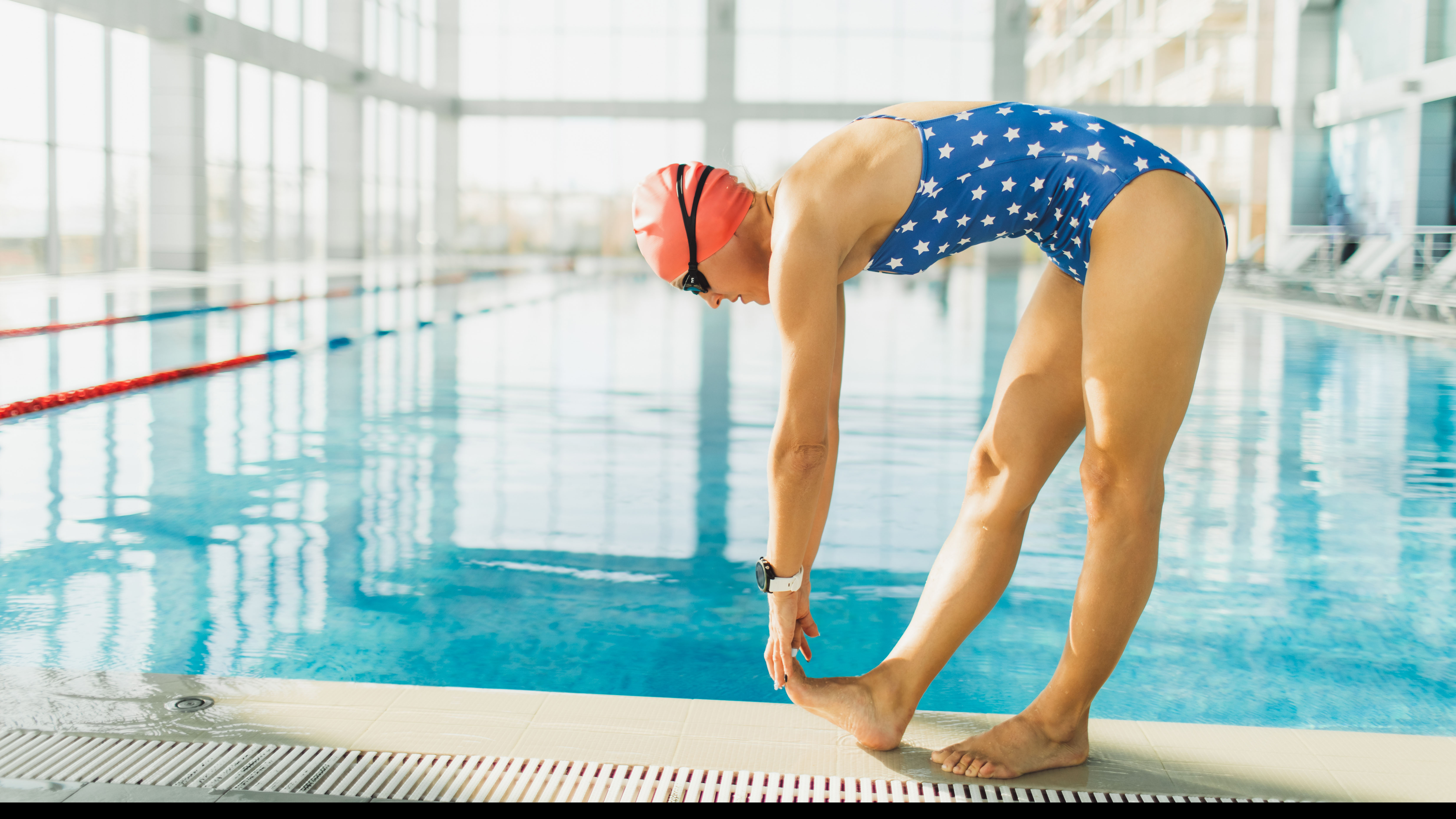
You’re in the middle of a nice steady swim when suddenly you get a foot cramp. It seems to come from nowhere and your foot can't uncurl from a spasm. Unfortunately, this kind of muscle cramp is common and it can be difficult to isolate the cause.
"It could be overuse, fatigue or electrolyte imbalance. We also often don't have sufficient strength and range of movement in our feet," explains physiotherapist Helen O'Leary.
Swimmers can be particularly prone to cramp because the kicking motion uses muscles that are usually protected by footwear rather than being actively engaged. "We don't use a lot of our foot muscles because we wear shoes for other sports," says O'Leary.
And although it is difficult to pinpoint the single cause of foot cramp when swimming, there are preventative measures you can adopt which may help to avoid it.

Helen O’Leary is a chartered physiotherapist and director of Complete Pilates in London. Helen started her career as a physiotherapist in professional men’s rugby and with Cirque du Soleil before settling back in London to start her own Pilates business. After 13 years dealing with acute trauma injuries as a physiotherapist, Helen now works with clients before and immediately after surgery to optimise their recovery.
What is cramp?
Muscle cramp is a common, painful, physiological disturbance of skeletal muscle which causes a sudden involuntary contraction accompanied by a knotting of the muscle.
Exercise-associated muscle cramps can occur during or immediately after muscular exercise with a review of 620 studies published in the journal of Medicine & Science in Sports & Exercise revealing that 67% of triathletes reported having experienced cramping during or after training and racing.
What causes foot cramp when swimming?
Foot cramps can happen in swimmers of all abilities. Two main causes for muscle cramps have been proposed in a recent review published in Sports Medicine, including changes in hydration status and electrolyte balance and altered neuromuscular control.
A previous study in the International Journal of Sports Medicine investigated American football players, with one group having no history of cramping, and another group who were cramp-prone. The group who were more prone to cramp consumed a greater percentage of plain water than electrolyte sports drinks with greater sweat sodium concentrations.
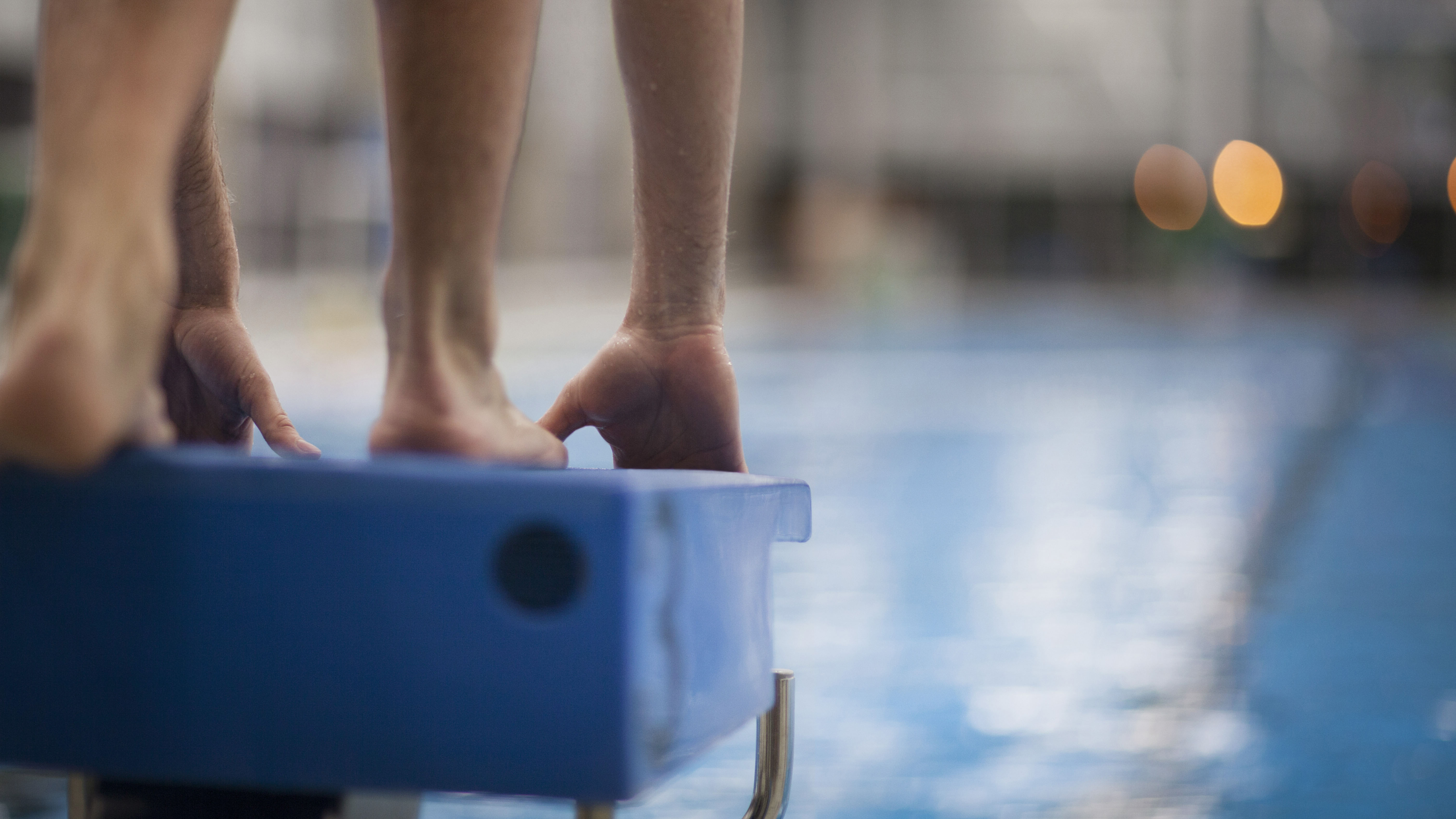
This study demonstrated that disturbances in water and salt balances can influence the likelihood of cramp occuring.
"This same principle relates to all sports, including swimming. Hard physical effort, high ambient temperature and large sweat losses accompanied by the ingestion of large volumes of plain water may be risk factors, and there is some evidence that the risk is reduced by the addition of salt to ingested fluids," says sports scientist Emily Codd.

Emily Codd is a sports scientist and product analyst at INCUS Performance. She has an MSc in Exercise Physiology and a BSc in Sport and Exercise Science. In her role at INCUS she works with a variety of elite and recreational athletes to help them learn more about their performance, how to improve technique and how to reduce injury.
When swimming it can be particularly difficult to notice that you are sweating, adds O'Leary. "People swim for an hour without taking a water break," she adds.
Muscle fatigue can also be a contributing factor so a harder session may cause muscle tiredness which is associated with exercise induced muscle cramps. But Codd says other causes of foot cramp while swimming could include cold water, especially when swimming in open water, because this can cause muscles to contract and stiffen.
Meanwhile unnecessary foot tension such as keeping your feet actively pointed or wearing flippers may cause tension into your leg making cramping likely.
How can you avoid foot cramps?
Foot cramps can potentially be avoided by having fluids that contain electrolyte tablets or powder during sessions, especially during harder or longer swims.
"Stretching frequently is important to maintain muscle flexibility and should be included in warmups and cooldowns. Foot stretching, and calf stretching can help avoid foot cramp," says Codd.
A gentle warm up is also recommended to reduce the likelihood of developing cramp with O'Leary recommending the following strength exercises to help build muscle robustness in the foot and avoid cramp whilst swimming.
- Related: What's the best swim stroke for burning calories
- Related: Why do muscles get sore after exercise?
Exercises to try
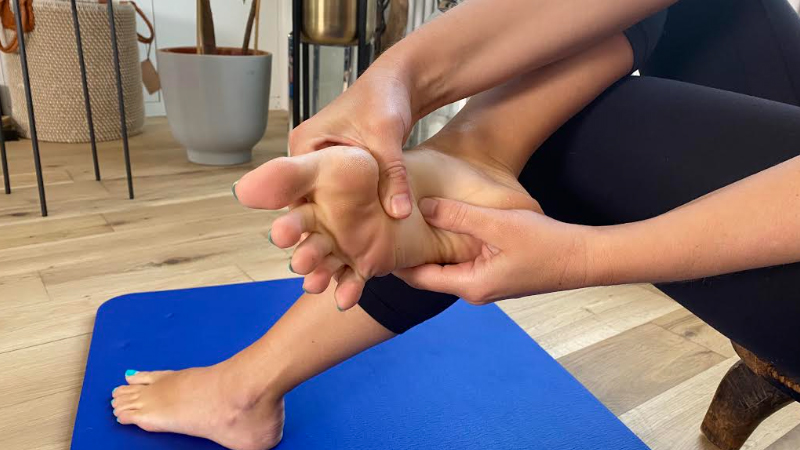
Foot massage
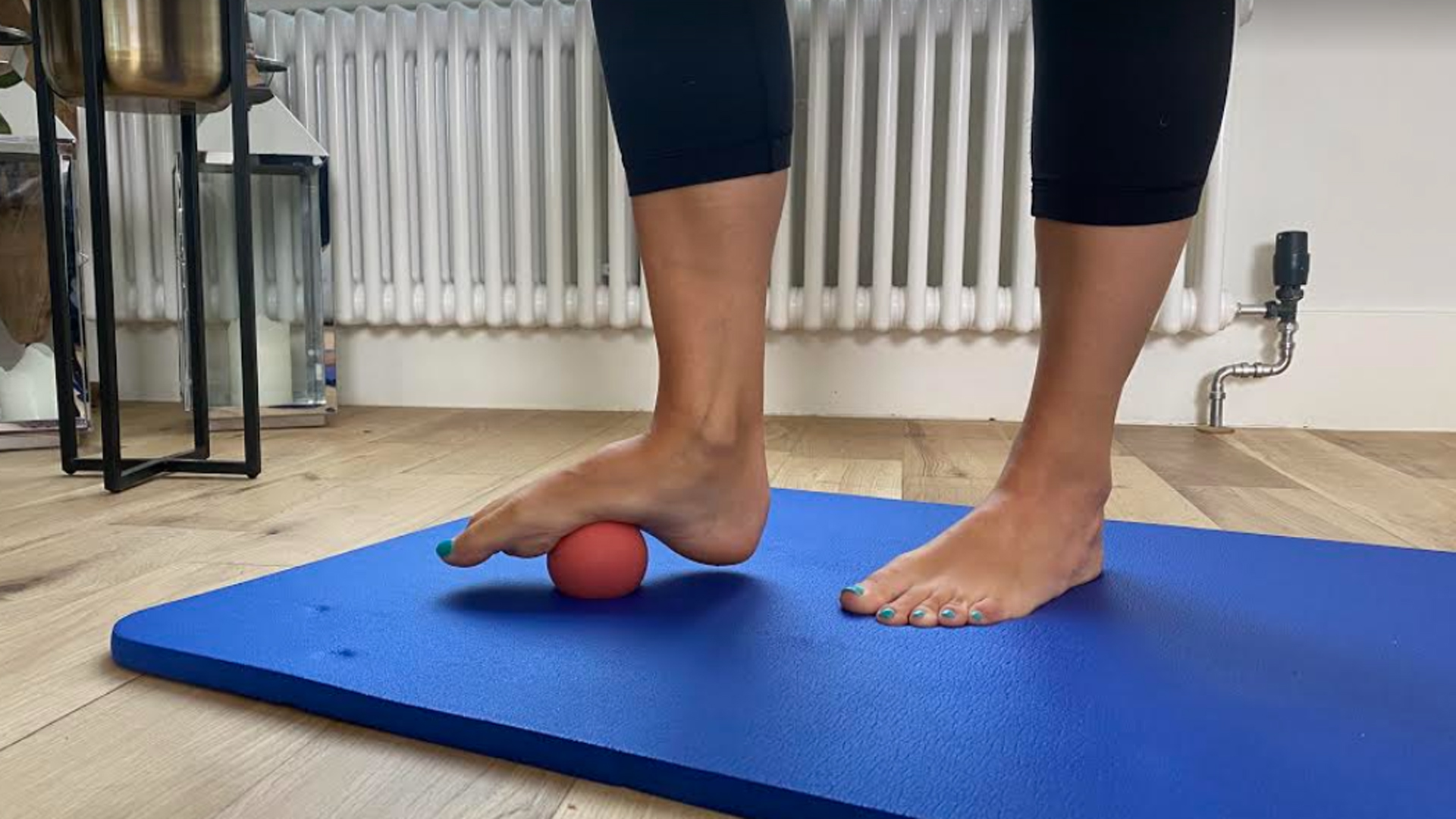
Ball rolling
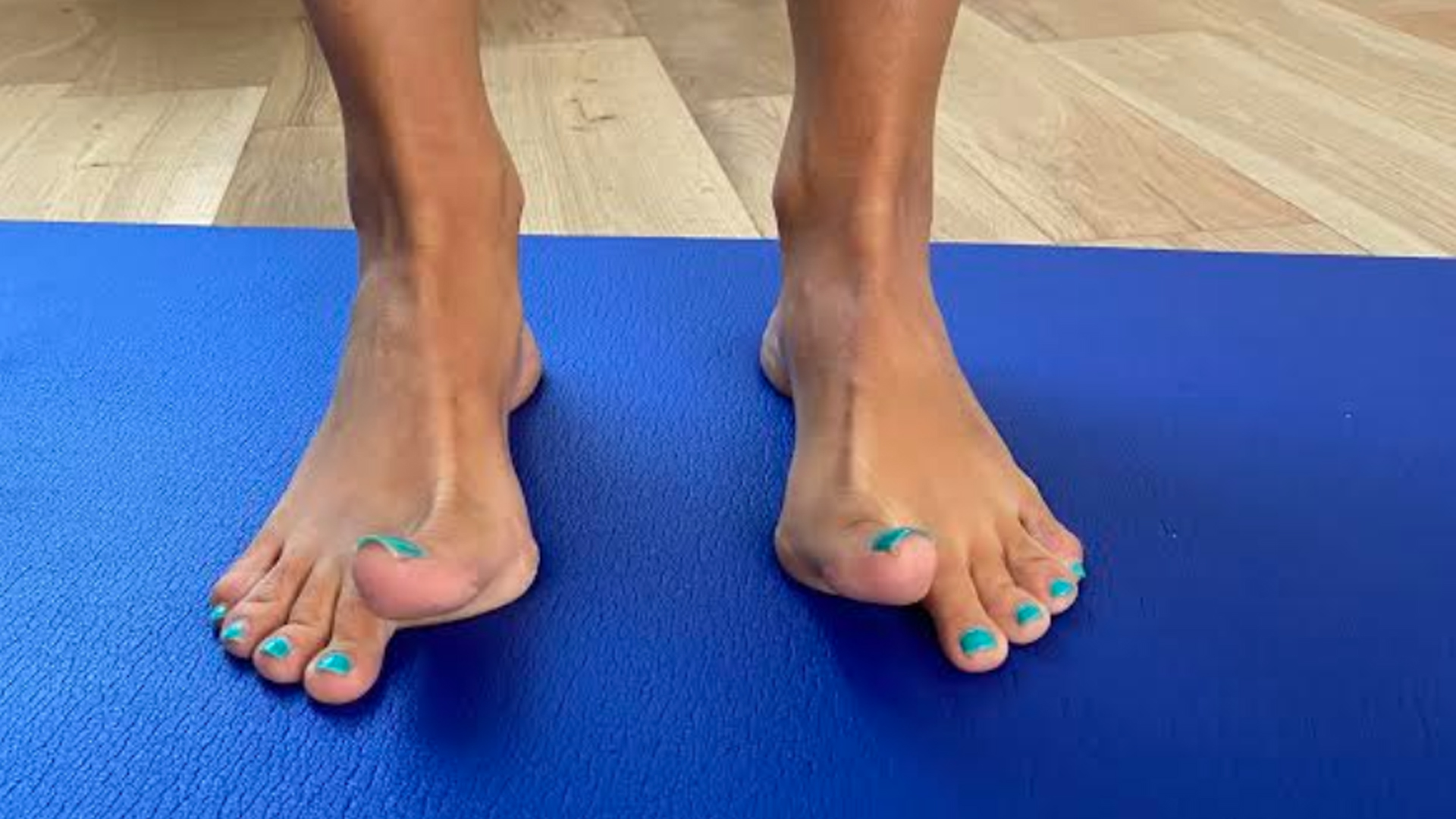
Toe yoga
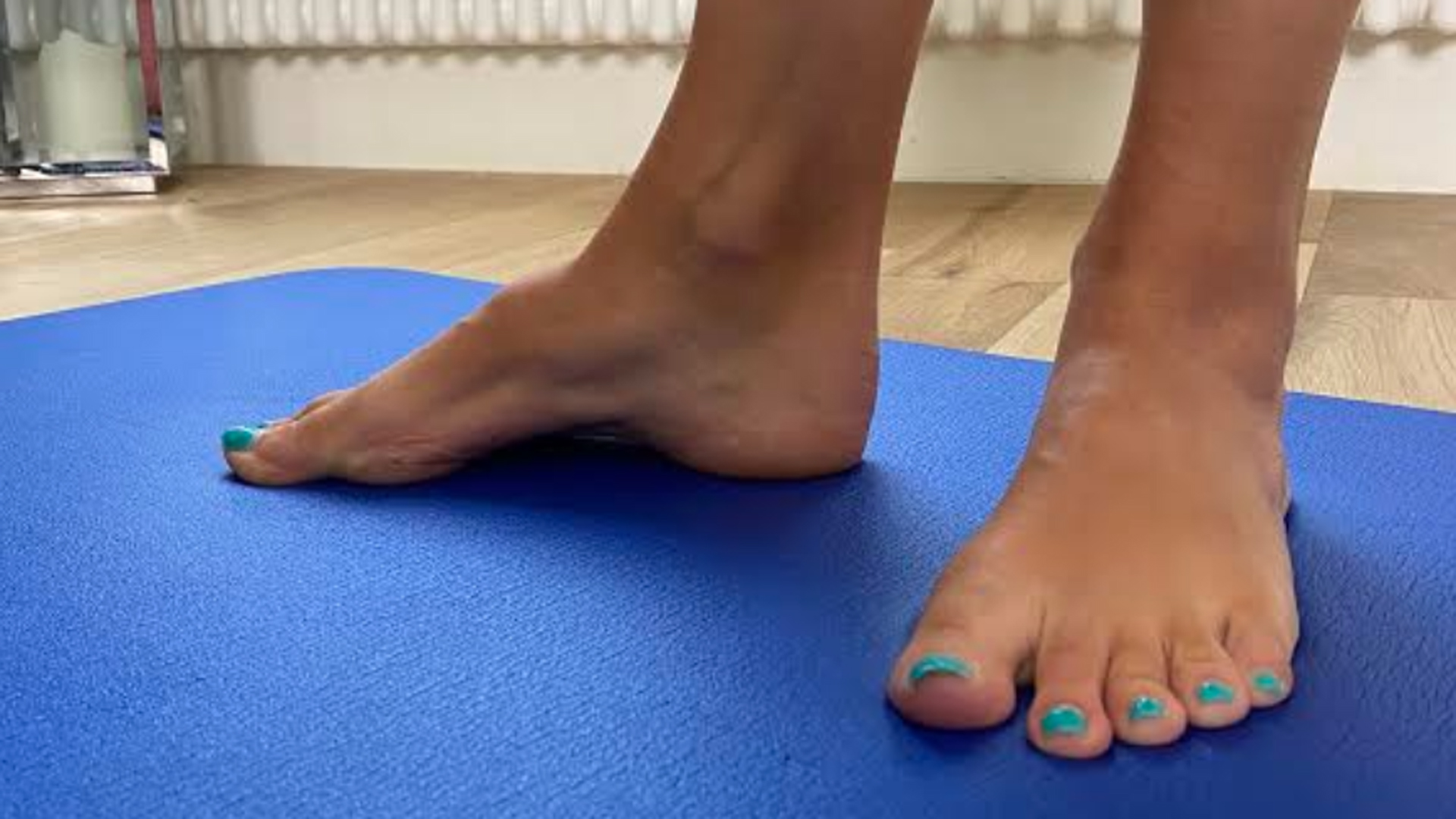
Toe scrunches
Foot massage: Sit comfortably and use your thumbs to gently massage the bottom of your foot.
Ball rolling: Make sure you go all around the ball of your feet. Aim to get up into the arch as well.
Foot stretches: Try to keep the big toes down in both directions
Ankle mobility: See if you can move just your toes, then your ankles, then your ankle, then your toes. This means you will get your ankle moving well.
Toe Yoga: Press all four toes into the floor and lift the big toe. Then press the four toes down and lift the big toe.
Toe scrunches: Press your toes into the floor and try to pull the front of your foot towards the back in order to lift your arch. The toes shouldn’t curl under.
How can you alleviate foot cramp immediately?
Cramp can often be relieved by passive stretching or massaging of the muscle.
"If you end up with foot cramp during a swimming session, make your way to the wall and stretch the foot in a slow gentle manner and massage the area. Do not try to swim through the cramp as this may cause muscle stiffness for days after. If the cramp eases, carry on swimming at a slower pace," advises Codd.
And if you are in open water or cannot get to the side of the pool roll onto your back while you recover and ensure you have a drink of water or electrolytes before swimming again.
"If you have tried all of the strength work and are drinking lots of fluid and it still keeps happening then it is worth going to a nutritionist and getting it looked at further to make sure you are recovering and replenishing properly," advises O'Leary.
Sign up for the Live Science daily newsletter now
Get the world’s most fascinating discoveries delivered straight to your inbox.
Lily Canter is a freelance money, health and lifestyle journalist with more than 20 years' experience. She writes about fitness for Fit+Well, Tom's Guide, T3, South China Morning Post, Runner's World and Trail Running magazine. She focuses on personal finance for Yahoo! Finance UK, Metro, The Guardian, and loveMONEY. In her spare time she is an ultra-runner, canicrosser and UK Athletics running coach. She also co-hosts the award-winning podcast Freelancing for Journalists.











